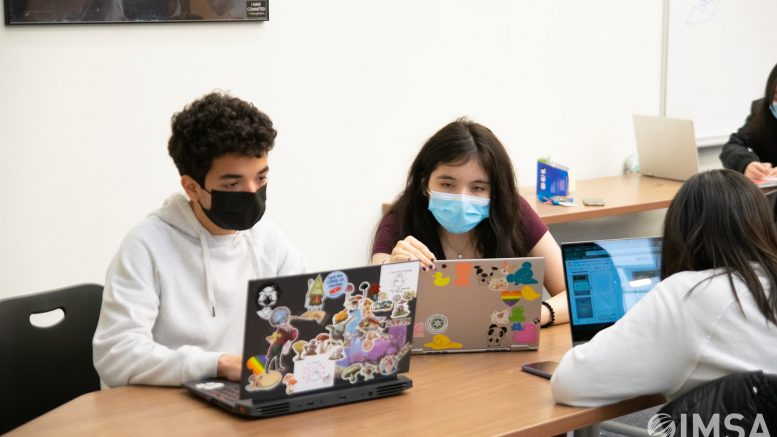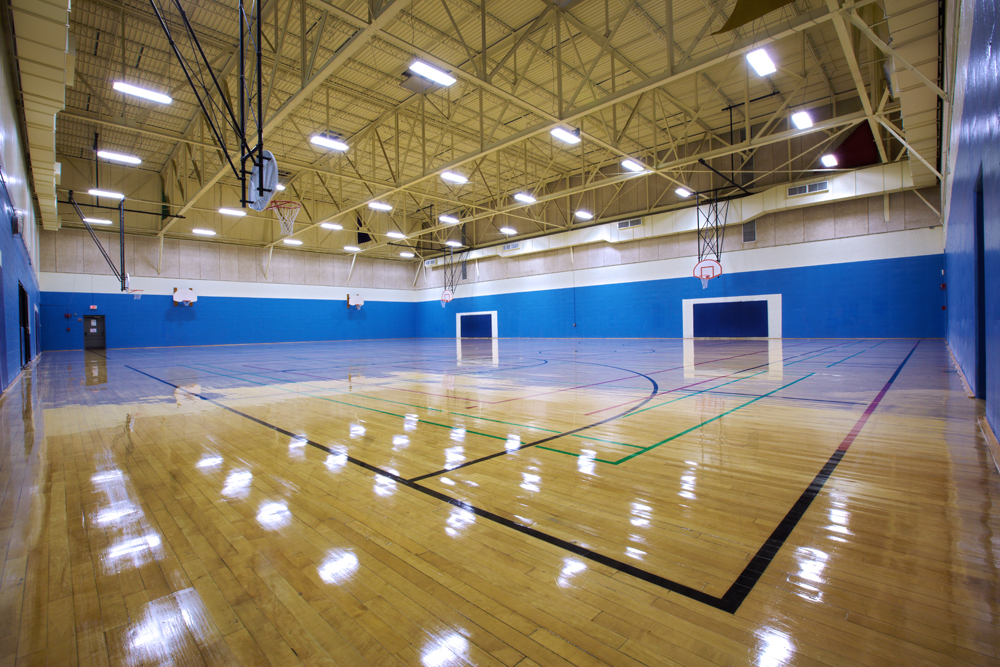Hybrid learning has become a common tool for mitigating the spread of COVID-19 in educational institutions. By the end of 2020, 46% of students’ education moved entirely online due to the pandemic, and another 23% moved to hybrid instruction. Schools implementing hybrid learning have typically sent COVID-positive students home for at least five days, per CDC guidelines. As a residential school, IMSA has instituted hybrid learning by asking affected students and staff to leave campus, physically separating them from the rest of the IMSA population.
Logistics
Students and staff regularly undergo SHIELD testing, a saliva-based method for detecting the virus. They can also request a 15-minute test for any reason from the Health Office, located next to the Lexington coat racks.
At the start of the spring semester, campus-wide emails from the IMSA Office of Strategy and Partnerships indicated that if a student tests positive through either method, they would be required to quarantine at home for ten days while learning virtually (staff and faculty may only quarantine for five days). Since then, IMSA has relaxed its quarantine period for fully vaccinated and boosted students showing no symptoms to five days off campus followed by a five day full-time masking period on campus. Students may also enter hybrid learning for other reasons, such as non-COVID illnesses, personal circumstances, or after a positive COVID exposure without having a booster dose.
Hybrid learning should not be confused with blended learning, which combines in-person instruction with asynchronous methods for all students (so that students only enter physical classrooms three days a week, for example). Instead, hybrid learning involves completely in-person instruction for most students, and with remote instruction available only for those at home. In the context of IMSA’s residential environment, hybrid learning is a compromise that allows the academy to operate at its normal capacity while offering online instruction in the interests of student health and safety.
Effects and Proposals
Virtual learning in some form has been widely adopted for K-12 students due to the pandemic. There has been much debate over its academic effectiveness, but online education also presents many challenges beyond the classroom. For example, inequity in technology access has negatively affected students who belong to low-income and minority communities. Many hands-on subjects, such as physical education and laboratory-based classes (biology, chemistry, medical courses, and physics), also suffer from being taught virtually because opportunities for physical learning are not available to students. Online learning often results in a greater degree of social isolation and demotivation for students.
According to students who were sent into hybrid learning, IMSA’s application of the protocol has been somewhat questionable and inconsistent. An anonymous student who studied from home for two weeks described their experience as a “learning setback.” Less than half of their classes had Zoom links available, so studying for their offline classes was very difficult. The student said that the structure of some classes, such as their Wellness class, as well as the inexperience of some newly hired IMSA instructors, were potential reasons for the lack of Zoom accommodations. While teachers were lenient about granting extensions for classwork and some quizzes, the student nevertheless missed many topics that were covered during their quarantine period.
Hybrid learning also alienated them from extracurricular activities. They said that their two weeks under hybrid learning were “dull” because they had looked forward to and practiced for events that they were forced to miss entirely. In addition, they felt more socially isolated, as they believe that “IMSA is all about person-to-person interaction,” and they were unable to directly speak with other students.
After their experience in hybrid learning, the student suggested that faculty and administration make a stronger effort to coordinate their accommodations for hybrid students. They also proposed regulations that are more responsive to the spread of COVID-19 on campus, such as tighter restrictions for higher case numbers and temporarily making specific classes virtual if they were exposed to the virus. Academically, they said that while hybrid learning is a necessary mitigation measure, they would have benefited from stronger support to help them catch up after returning from school at home.






Be the first to comment on "Hybrid Learning at IMSA"